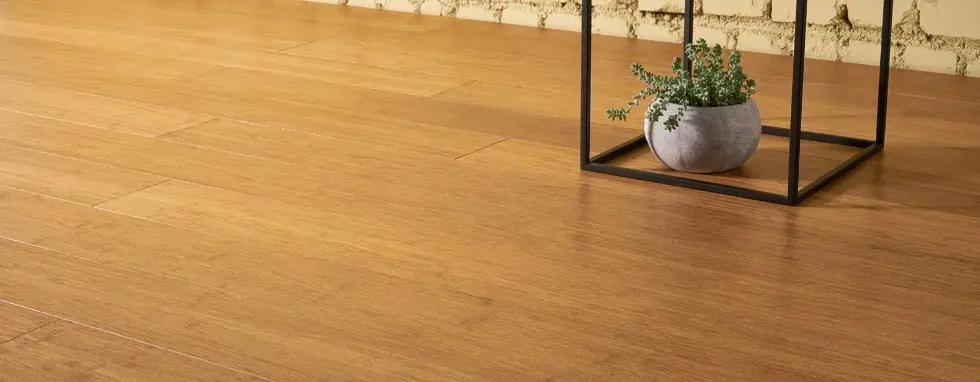
Bamboo flooring is a beautiful and exotic alternative floors for hardwoods. Bamboo floors are the best choice for environmentally and healthy flooring in the world because of its raw material - bamboo which is regarded as a grass, not a wood. Bamboo floor is developed over 20 years and it has been a very mature product, very stable and consistent quality flooring. Bamboo floors are widely popular over the countries, from western world to developing countries.
Bamboo is actually extremely strong. The nice thing about bamboo is that it is much more environmentally friendly than using trees for lumber. Bamboo is a weed - technically, it is a grass. And a very, very fast-growing one at that. It self-propagates and can quickly take over any forest space. It's hardy, tolerant of a variety of growing conditions, including severe ones.
Strand woven bamboo flooring is created by shredding bamboo fibers and compressing them with adhesives under high pressure. This manufacturing process results in an incredibly dense and durable product, often rated significantly higher on the Janka hardness scale than both horizontal and vertical bamboo.
Aesthetic Appeal: Strand woven bamboo has a unique look that combines the natural beauty of bamboo with a more contemporary finish. The tight grain pattern and varied color options make it versatile for all design styles.
Durability: Strand woven bamboo is the most durable of the three options, making it ideal for high-traffic areas, commercial spaces, and homes with pets or children. Its resistance to scratches and dents means it can maintain its appearance for years with minimal upkeep.
Installation and Maintenance: This type of bamboo flooring can be installed in various ways, including floating and glue-down methods. Maintenance is similar to other bamboo types
Vertical Bamboo Flooring
Vertical bamboo flooring is produced by slicing bamboo stalks vertically to create narrow strips. This design results in a more streamlined look, making it ideal for modern and minimalist interiors. The vertical orientation of the grain creates an illusion of height, making spaces feel larger and more open.
Aesthetic Appeal: With its clean lines and sleek appearance, vertical bamboo flooring is perfect for contemporary designs. The subtle texture of the grain adds interest without overwhelming the space.
Durability: Similar to horizontal bamboo, vertical bamboo offers good durability, though it may not be as hard as strand woven bamboo. It can withstand everyday wear and tear, making it suitable for various areas of the home.
Installation and Maintenance: Vertical bamboo flooring can also be installed as a floating floor or glued down. Like horizontal bamboo, it requires regular cleaning and can benefit from occasional refinishing.
Horizontal Bamboo Flooring
Horizontal bamboo flooring is made by laying bamboo strips horizontally in a plank formation. This method highlights the natural grain patterns of the bamboo, resulting in a distinctive look. The wider strips emphasize the unique nodes of the bamboo stalks, creating a more pronounced texture.
Aesthetic Appeal: Horizontal bamboo flooring has a more traditional appearance, making it suitable for classic and rustic interiors. The visible knots and grain variations add character and warmth to a space.
Durability: While horizontal bamboo flooring is durable, it typically has lower hardness ratings compared to strand woven bamboo. It is still a strong option for residential use but may be less suitable for high-traffic areas.
Installation and Maintenance: Horizontal bamboo flooring can be installed as a floating floor or glued down. Maintenance is straightforward, requiring regular cleaning and occasional refinishing to maintain its appearance.

 s.id/yourname
s.id/yourname